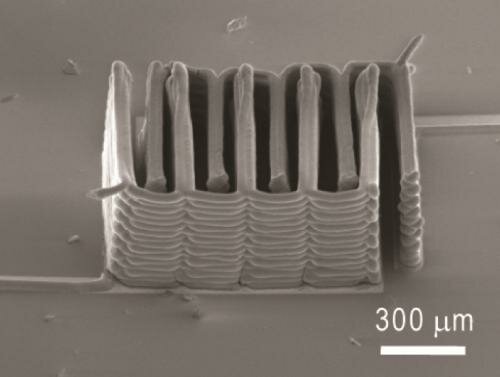Due to the compression of various technologies such as microprocessors and LEDs, our electronics have been shrinking dramatically over the last couple decades. Where computers that could only do basic calculations once occupied entire rooms, smartphones can now display lush graphics, give directions, and connect people instantly on different continents all at the same time. 3D printing is already increasing the shrinking trend by producing customizable antennas for smartphones, but it’s not stopping there. A team of engineers from Harvard and the University of Illinois at Urbana-Champaign have successfully 3D printed micro lithium-ion batteries.
Jennifer Lewis, Ph.D., is senior author of the project and the Hansjörg Wyss Professor of Biologically Inspired Engineering at the Harvard School of Engineering and Applied Sciences (SEAS). She previously worked at the University of Illinois at Urbana-Champaign where she collaborated with co-author Shen Dillon, an Assistant Professor of Materials Science and Engineering. Together, with help from a team, they sought to address the miniaturization of modern electronics and how to power them. Current methods of producing microbatteries involve stacking thin films of solid materials, but they don’t hold much charge. The researchers figured that layers of tightly interlaced, ultrathin electrodes would hold more energy.
If you need tiny layers of anything, there’s no better technology to turn to than 3D printing. Microprinting is advancing quickly. So for the mini batteries, Lewis and her team created a fast-drying ink made up of nanoparticles of different lithium metal oxides for the anode and cathode portions of the print. The ink was deposited out of a 30 micron nozzle onto two gold-teeth combs; the whole thing was encased and then filled with an electrolyte solution. The end result was a functional battery about the size of a grain of sand. That’s some tiny power.
How did the micro 3D printed battery perform? “The electrochemical performance is comparable to commercial batteries in terms of charge and discharge rate, cycle life and energy densities. We’re just able to achieve this on a much smaller scale,” Dillon said. And this doesn’t just affect small electronics, but also dense and strangely shaped devices. These batteries can be printed in nearly any shape. Smartphones, medical implants, Google Glass, and so much more can be optimized with microbatteries. Hopefully this will become a startup.
Source: Phys.org


Pingback: Thingify.com.au » 3D Printed Batteries The Size of a Grain of Sand